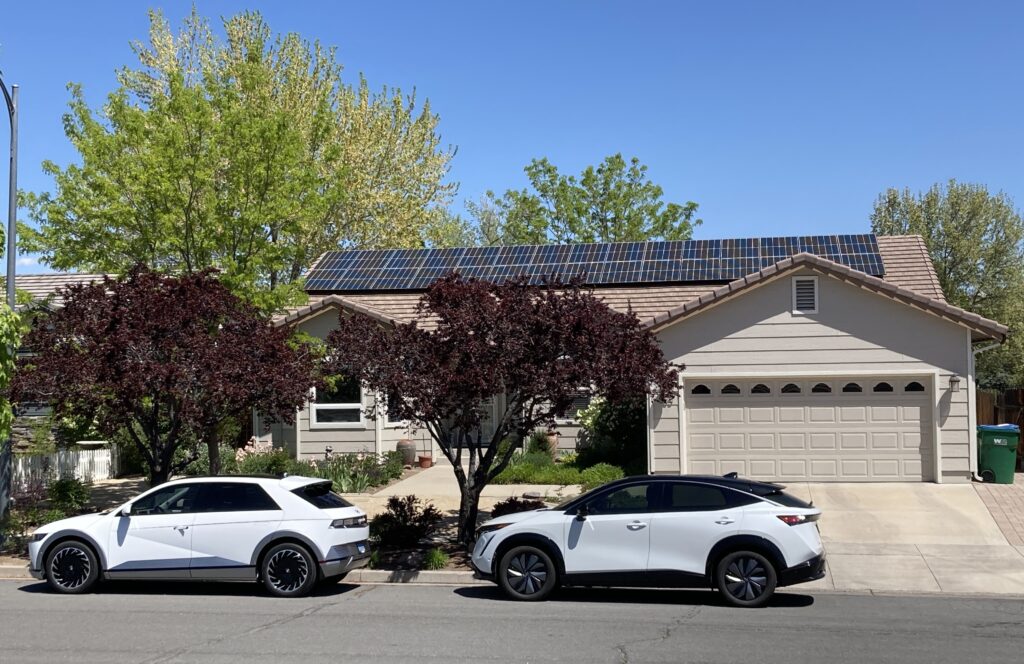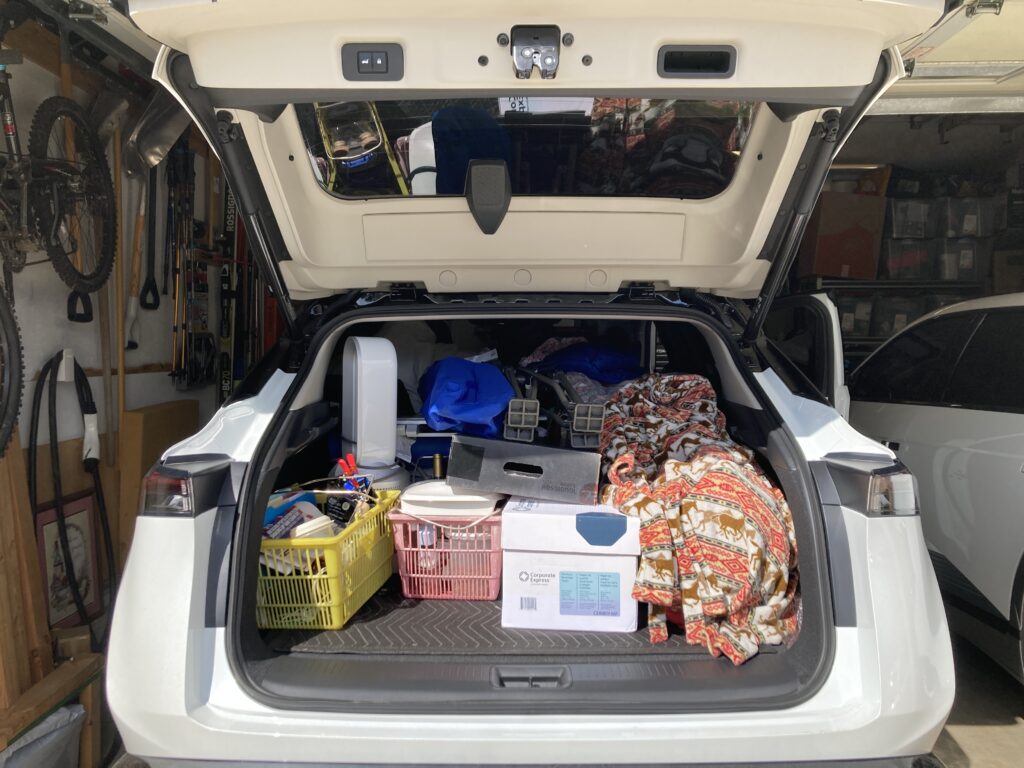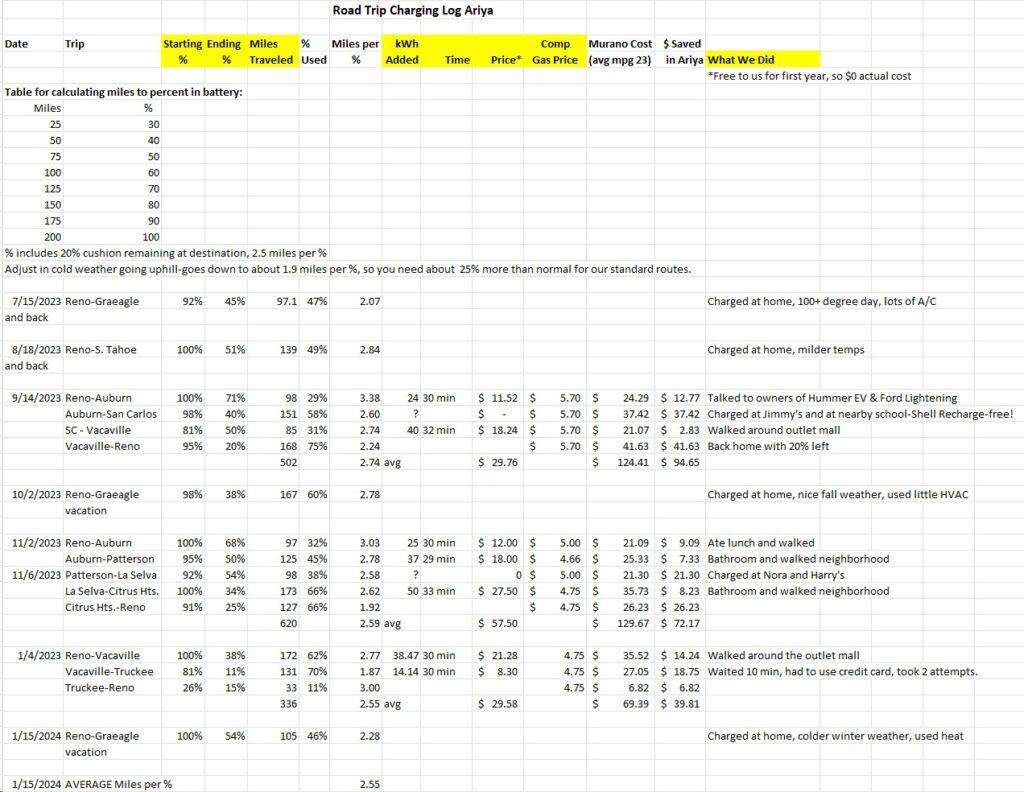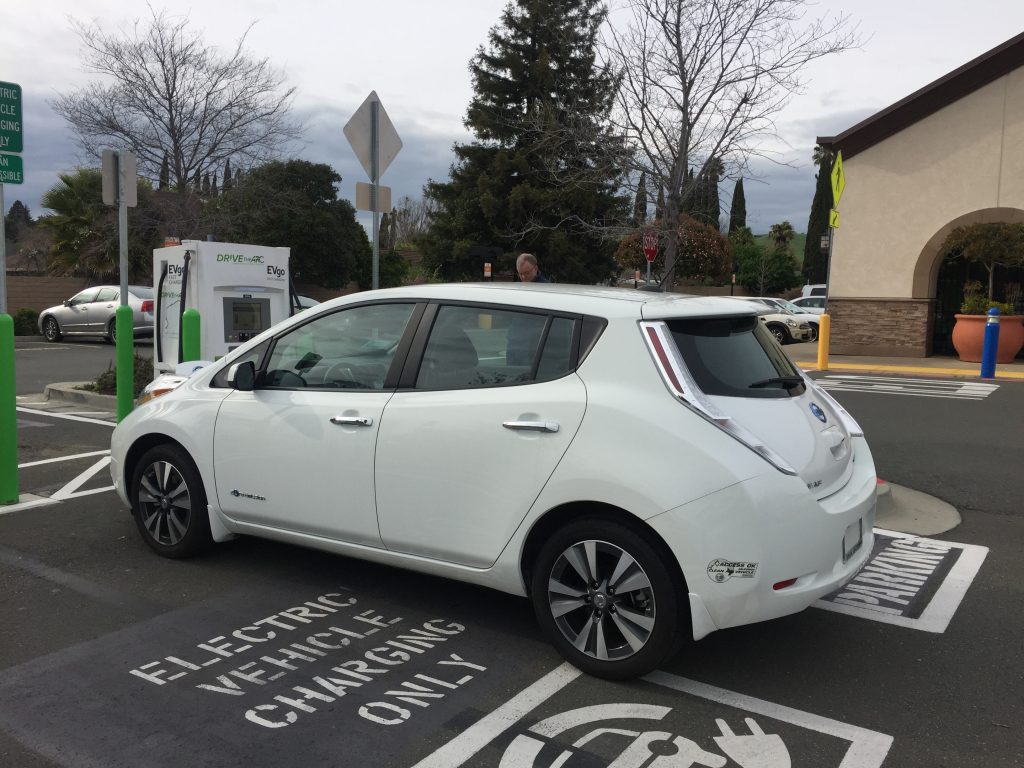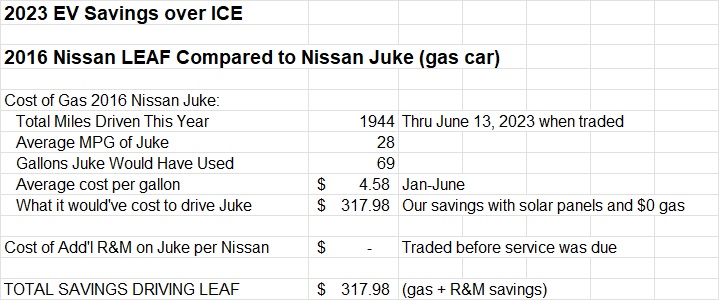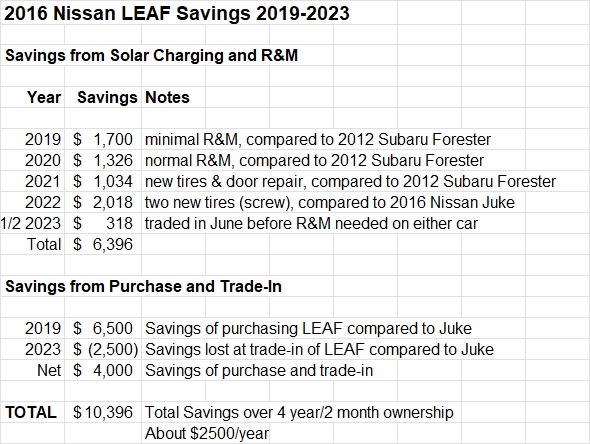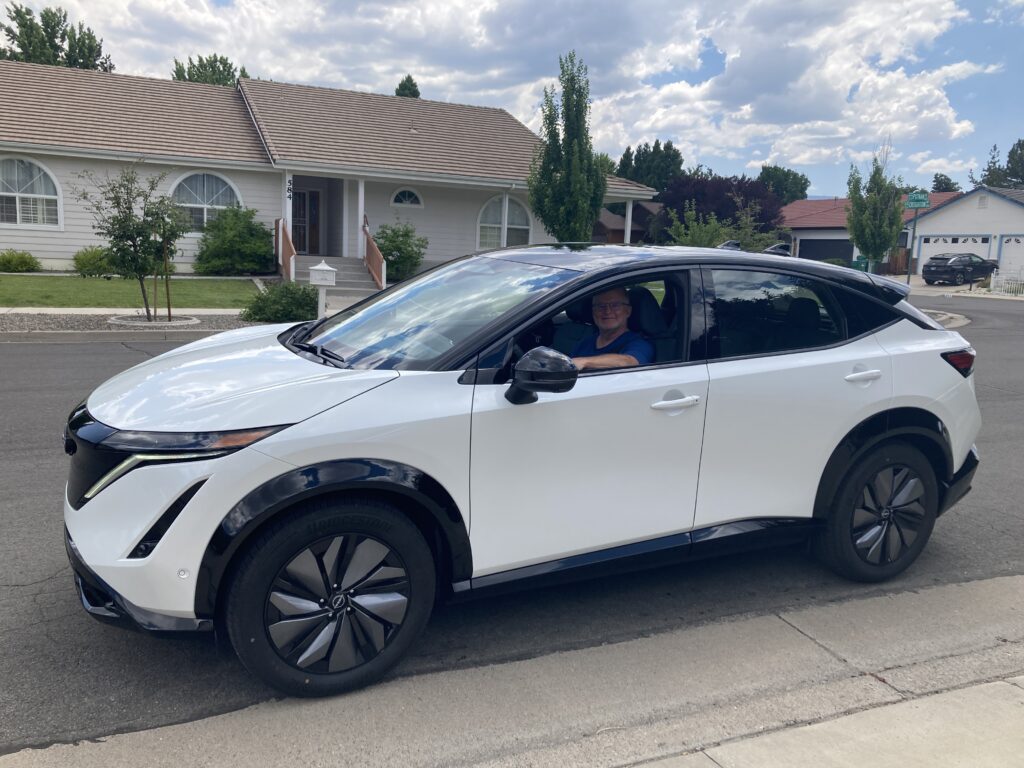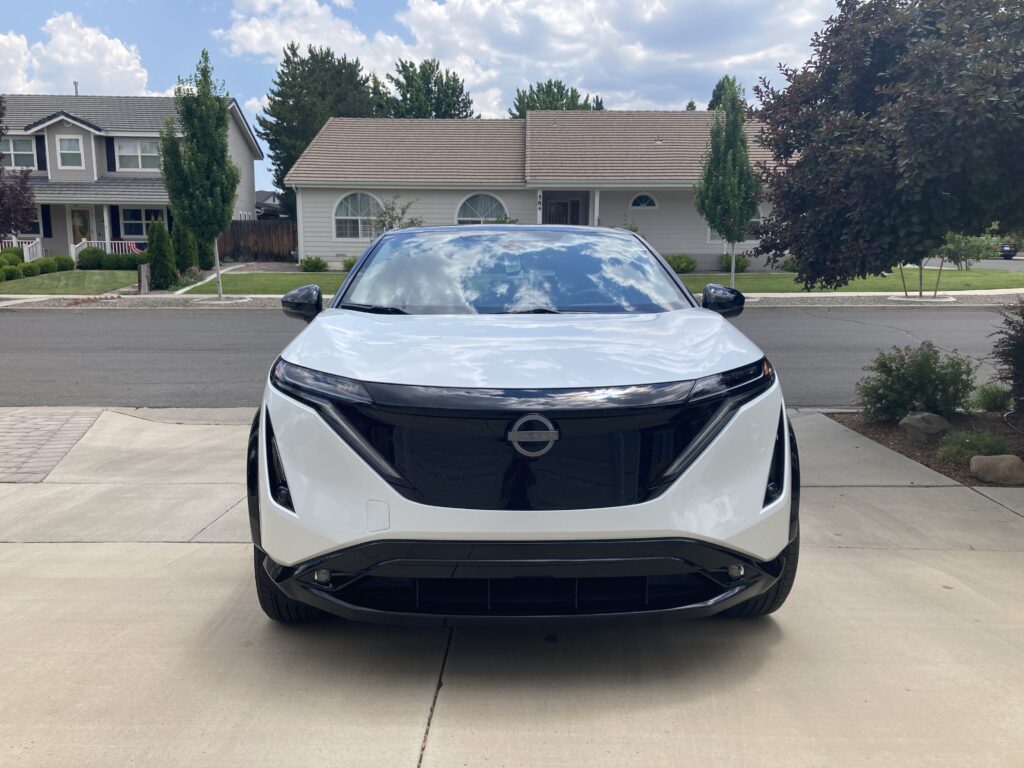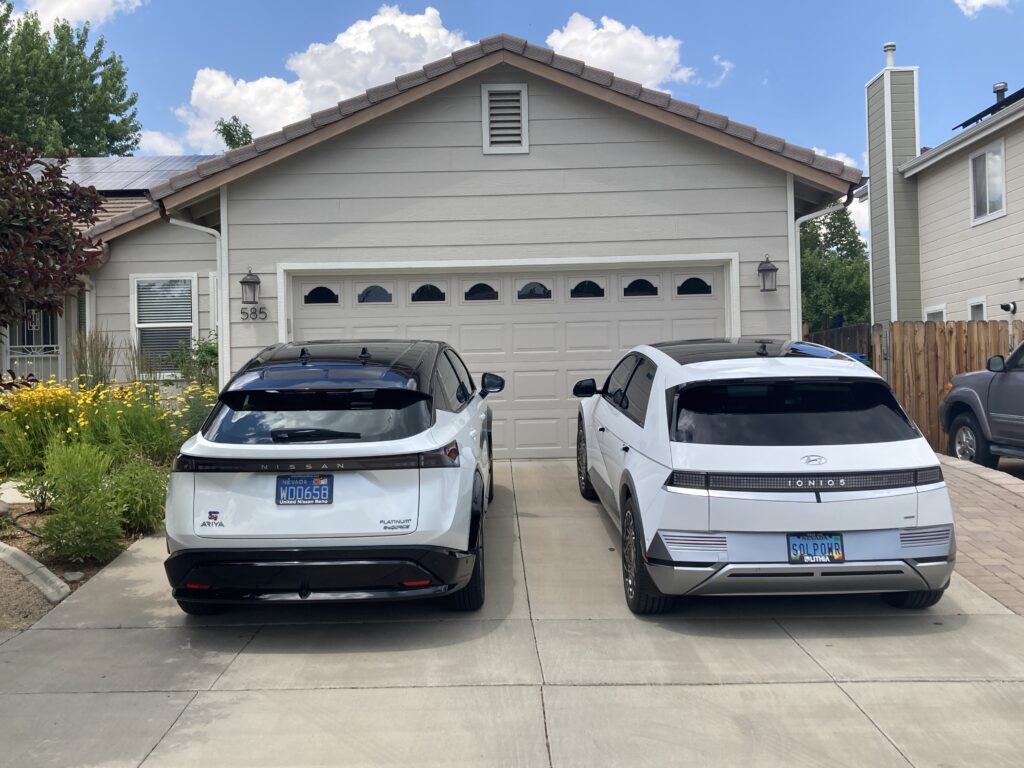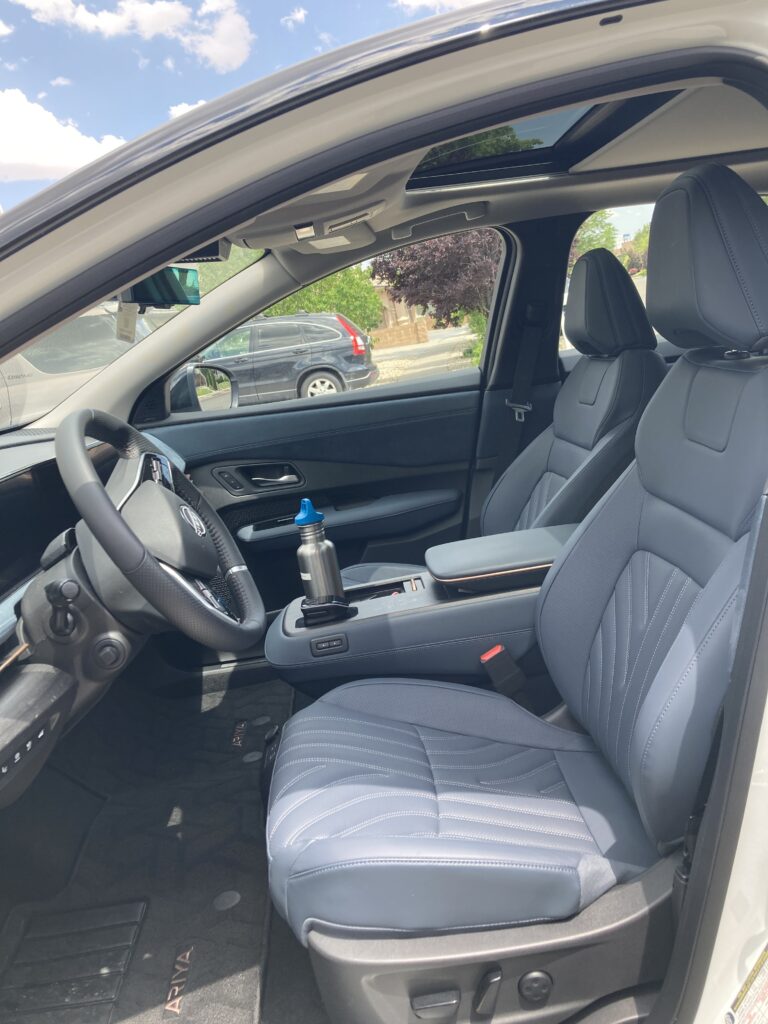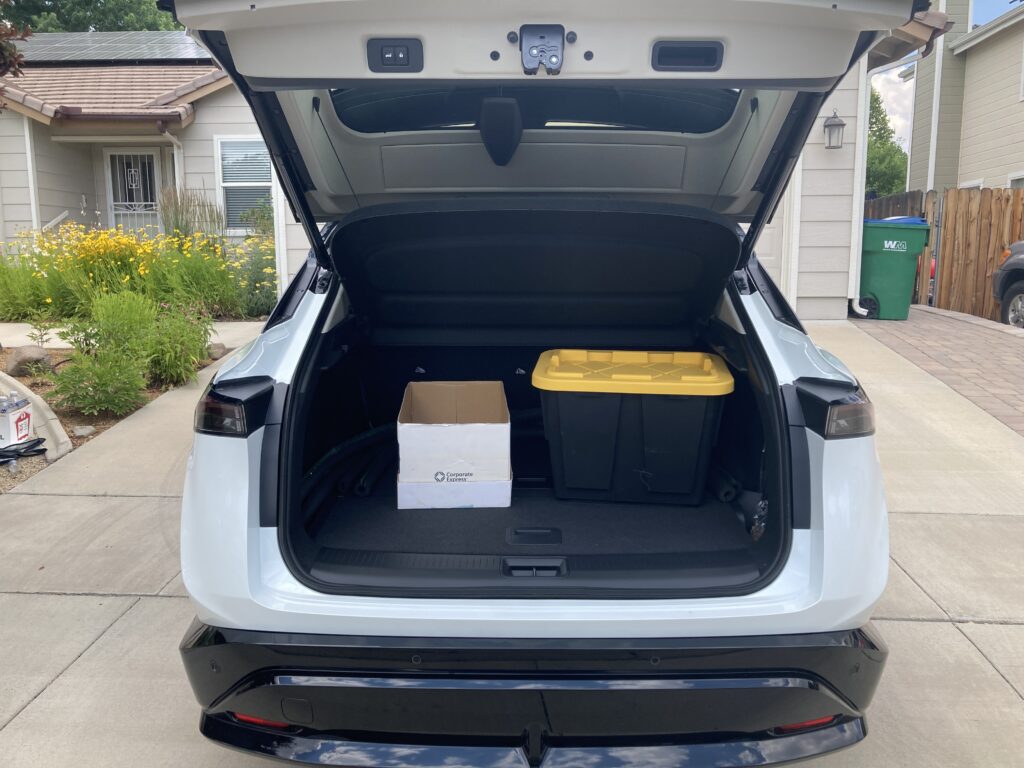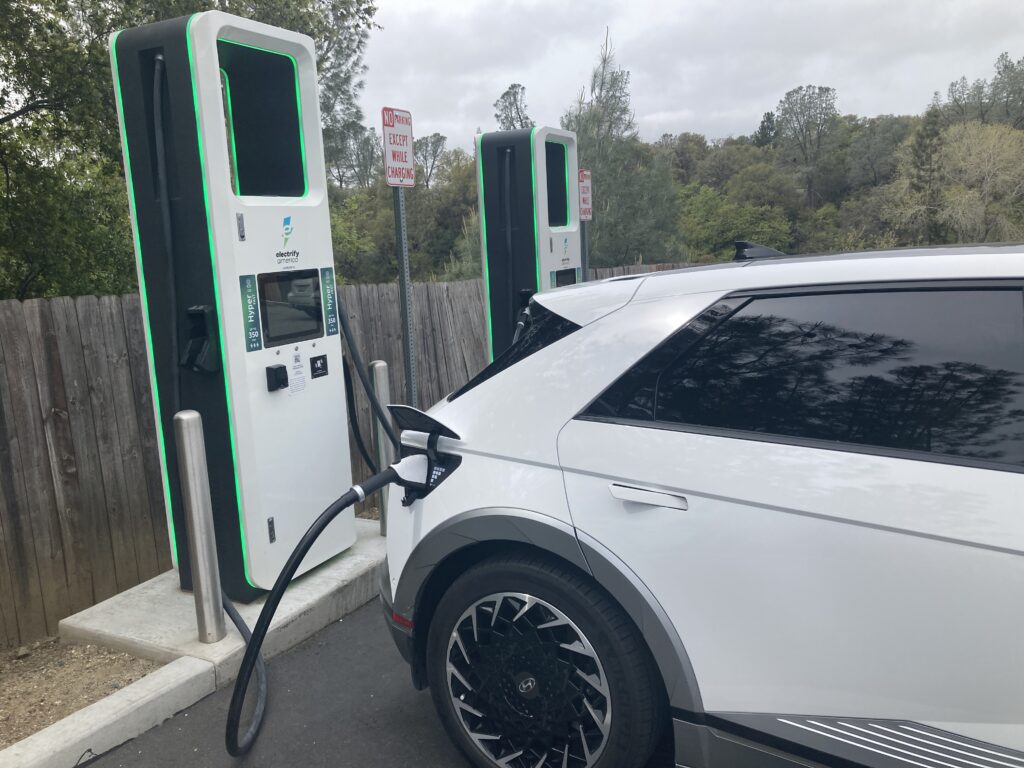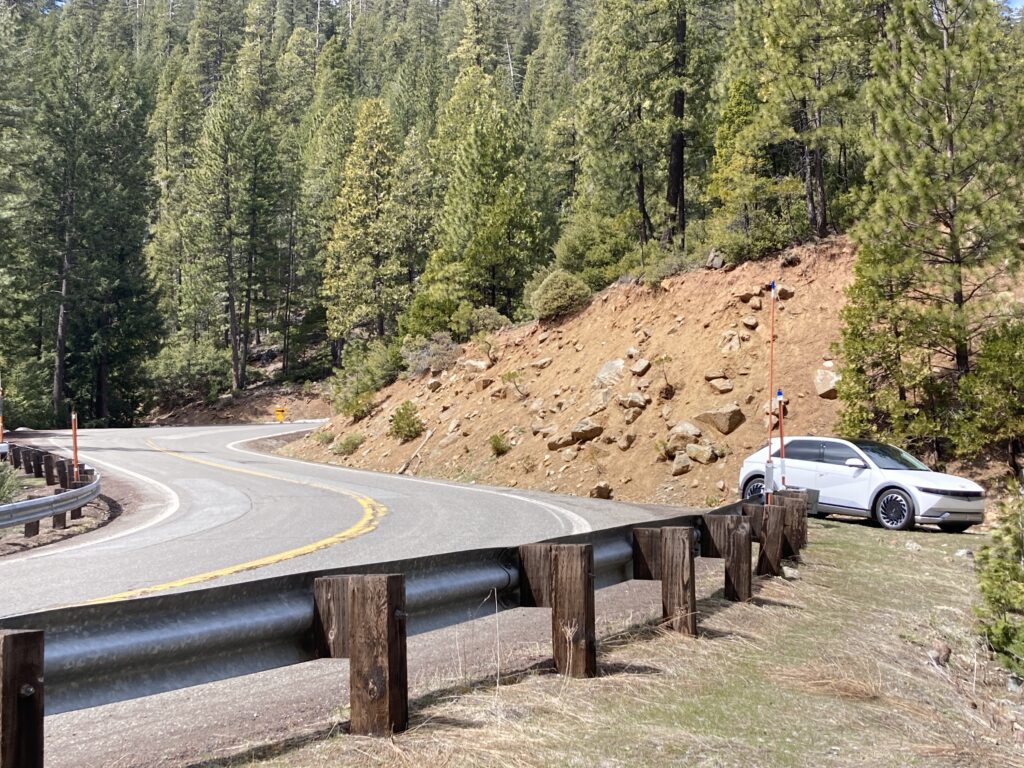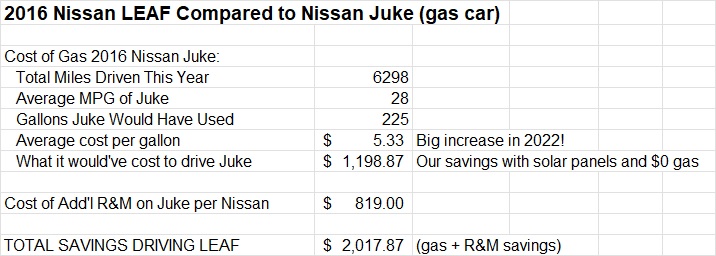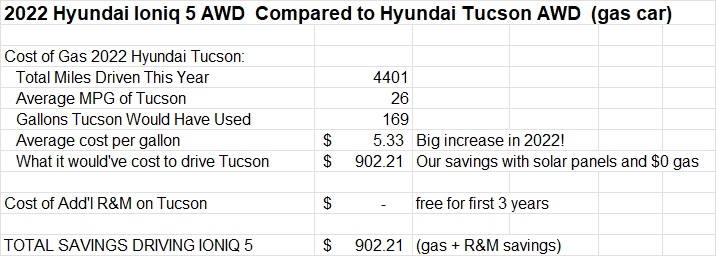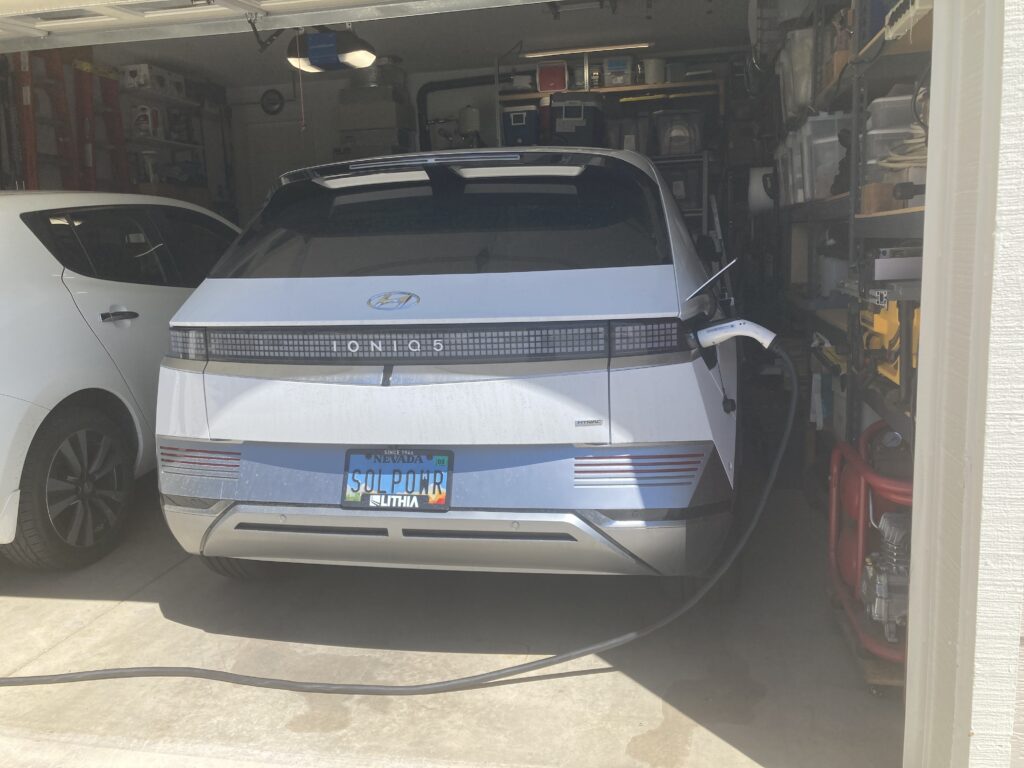We have now been driving an EV since 2019 when we got our little Nissan LEAF, so we have 6 years of EV experience! Hard to believe… I looked back and realized I haven’t done an annual recap since 2022, so it’s time! In this post, I’ll look at miles traveled, gas $ saved and pounds of carbon saved. In 2023, Scott drove the LEAF for 1/2 the year and the Ariya for the other half. I’ve been driving the Ioniq since 2022. So 2024, is the first year that we drove both the bigger EV SUV’s for a whole year. I won’t repeat everything I wrote last June when I reviewed our cars and what it’s been like to be an all EV family for 2 years (now over 2.5). Here’s the link to that post: https://rhondaashurst.com/2024/06/25/looking-back-on-going-all-ev-two-years-later/. I will give some updates on things that have changed since the June post.
Here’s the data:
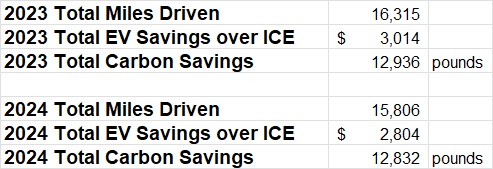
Annually, we average about 16,000 miles between our two EV’s, saving about $3,000 in gas, and keeping about 13,000 pounds of carbon from entering our atmosphere. Right now we are still on free maintenance, so there is no additional savings from that, as the comparable ICE (internal combustion engine) cars would also still have free maintenance. In the future, we expect to save additional money every year on repairs and maintenance of the EV’s over their comparable ICE’s.
Driving EV’s that are powered by the solar on our roof is the way we save the most money and carbon. We use about 4 megawatts per year of electricity at home to charge our EV’s. Essentially, we drive free on the Nevada sunshine! Plus they are way fun to drive! We love not going to gas stations. People ask how long it takes us to charge our cars and we say about 1 minute: 30 seconds to plug in and 30 seconds to unplug. The charging happens while the cars are just sitting in our garage. Of course, it’s different when we are on the road, which I’ll talk more about below. We take about 3-4 road trips a year that require us to charge on the road, so that is a minor part of our charging experience.
One change has happened to our home charging routine–my Ioniq has decided it doesn’t like our Level 2 charger that is part of our solar inverter. It keeps shutting down the charging session, thinking it is overheating. We have tried it on our neighbor’s Level 2 charger which is on a 220-volt outlet and it works fine, so we know it is an issue with our particular charger. What we decided to do was use the 110 charger that came with the car and set it up on its own outlet. It turns out this works much better for us, because I no longer have to drag the charging cable from the solar inverter around both cars to the back of my car to charge. All I do is grab my charger conveniently located right next to my charging port (thank you Scott) and plug it in. Scott no longer has to unplug my car and drag the cable out of the way in order to get his car out of the garage. Then he would plug my car back in and do it all again when he came home. A pain in the butt! It does take longer to charge my car, so I tend to plug in at around 30-40% for a couple of nights and charge it back up to 80%. I probably do this about once a week, so no big deal. Since the car is just sitting in the garage anyway, it might as well be plugged in. At least it works consistently now and is much more convenient. I do have to pre-plan for a long road trip as it takes a few nights to bring it up to 90-100%. Scott now gets the Level 2 charger to himself and uses it about once every 9-10 days to bring the Ariya up from 20% to 80%. He drives his car less than I do, since I make a few trips across town every week to care for my mother. Another advantage of this new charging system is that we can both charge simultaneously if we need to.
Pro-tip: If you don’t drive a lot of miles (under 40) for a commute every day, a Level 1 (110-volt) charger will work fine for at-home charging. You don’t have to have a Level 2 unless you need that for your commute.
This year I also kept track of all the electricity that went into our cars and we used about 5 megawatts, 4 at home and 1 on the road. Dividing this by our total miles driven, I calculated we average about 3 miles per kWh. This is less than our little LEAF which got 3.7 miles/kWh. It makes sense that these larger and heavier vehicles would get less miles/kWh.
Road Tripping
I have written a few posts on road tripping in our EV’s in the past:
https://rhondaashurst.com/2024/01/23/road-tripping-in-the-ariya/
https://rhondaashurst.com/2023/01/24/road-trip-to-la-selva/
https://rhondaashurst.com/2023/05/09/taking-the-ioniq-into-the-boonies/
Those posts share more about how doing a road trip in an EV works and tips on figuring out how much of a charge you need to get where you are going (pro tip: your EV will tell you it can go farther than it really can on a road trip). In general, we use the Electrify America network and have not had problems with finding available and working chargers. Our travels are all in California so far, which has an extensive charging network along major highways. On average we spend about 30 minutes on a Level 3 charger after driving 100-150 miles. We tend to plan our charging stops around our needs and not the car’s.
During that time, we eat lunch, take walks and use the bathroom. We’ve noticed that we feel a lot better when we reach our destination because we take longer breaks and walk more.
In this post, I’d like to share our experience of paying for Electrify America charging now that our free charging has come to an end. I’ll also compare that against what we would pay for gas if we were driving the Tucson instead of the Ioniq. Here is the data:
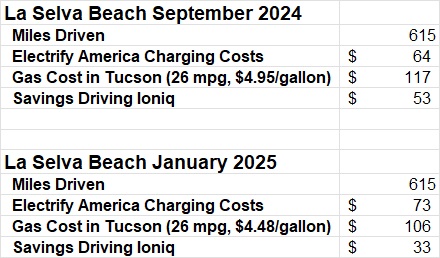
As you can see, we save a significant amount of money driving the EV’s, but this is mostly due to the fact that we charge at home before we leave and at my aunt and uncle’s when we arrive. We don’t pay for that electricity, so that makes a big difference.
Just for kicks I calculated what it would cost on the Electrify America network if we had to pay for all the electricity we use on a road trip. It takes about 200 kWh to do the trip in the summer and 224 kWh in the winter. This is because of using heat and lower battery performance in the winter. Electrify America currently charges $.56/kWh in California. So it would cost $112 in the summer and $125 in the winter. Looking at the table, you would about break even in summer and in winter you would pay more than you would for gas. This was not always the case, when the rate was $.43/kWh, but as it has increased, the costs of driving an EV on the road are now comparable to driving an ICE if you have to pay for all your charging.
NOTE: I did deduct the money we paid to Electrify America from the gas savings in the first table.
Overall, we are loving our EV’s and don’t miss driving gas cars at all! They are much quieter, more fun, and it gives us peace of mind that we aren’t emitting any more carbon into the atmosphere. They are also significantly cheaper to drive when you generate your own electricity. But even if you don’t, the 4000 kWh we put in our cars at home would have cost around $500 at 12 cents per kWh from NV Energy. That’s still a savings of $2500 a year driving EV’s.
We are looking forward to being able to charge on the Tesla network, hopefully in the next few months, so stay tuned for an update on that adventure!
